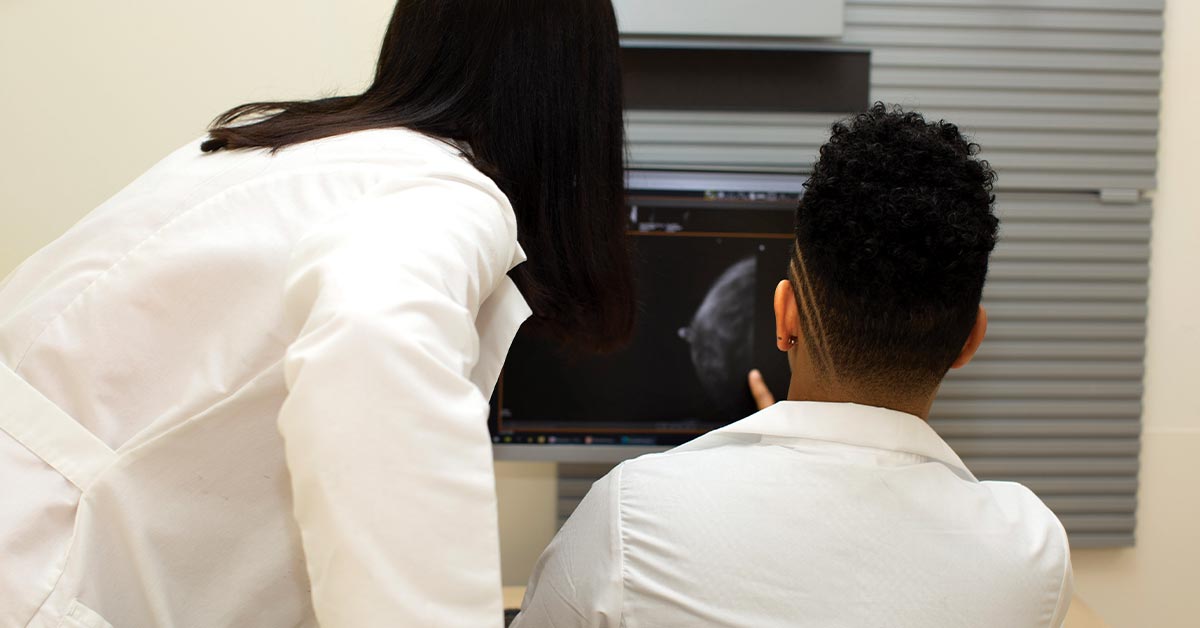With October being Breast Cancer Awareness Month, the dialogue in this season is often focused on prevention, screenings and education around a disease that affects so many. Breast health overall is a largely neglected topic that sits in the shadow of this larger issue. But, many of our readers have breasts and/or their children do, and there's much to understand about them throughout the many phases of life.
To get the bigger picture, we talked with Haley Zimmer, MD, an internist and pediatrician with University of Michigan Health-West. In that conversation, we covered changes that can occur in breasts from puberty, to pregnancy, to midlife, to menopause and beyond. Let's dive in!
Breast development usually starts sometime between ages eight and 13, and it's not uncommon for it to begin unilaterally, Dr. Zimmer says. This is a period when other bodily changes are occurring, and it's natural to have questions. Often parents come to her with concerns—especially when the breasts are developing differently. While it's smart to be diligent, she stresses that this is pretty common.
When breasts become fully developed in the late teens to early 20s, women should really become familiar with their breast anatomy, so they can establish a baseline. Knowing how the breasts feel and look, through regular self-examinations, can help them notice any changes that might indicate a problem.
"What I reinforce for patients is that it's important for them to be familiar with what's normal for them, so that if something strays from normal, they know when to come into the doctor," Dr. Zimmer said.
Since this isn't a life stage when mammograms are typically directed, being aware of family history and genetics, as well, can be crucial to knowing if getting early screenings could be a good idea.
The next major milestone in some women's lives is childbearing. The hormonal changes that occur in pregnancy, birth, and breastfeeding add another dimension to breast development, with milk-producing glands, called alveoli, becoming more prominent.
"Breasts that have lactated will have architectural changes, and after lactation is finished the breasts may have a more 'deflated' appearance," Dr. Zimmer said. "They also might not be as dense as those that haven't lactated, though that's not always the case. Either way, dense breasts are harder to image and masses can be harder to detect, making it even more critical to remain attentive to individual breast anatomy."
Dr. Zimmer cautions women who are in pregnancy and breastfeeding that they're not immune to breast cancer, and shouldn't ignore any concerning changes in their breasts, such as one-sided swelling/mass, skin changes, focal tenderness or bloody nipple discharge.
Whether childbirth has occurred or not, breasts will continue to undergo changes as a woman ages. The gradual decrease in estrogen in perimenopause and menopause causes a loss of fat and tissue and shrinking of mammary glands. Breasts will become less firm and start to droop, which, short of intervention with plastic surgery, is simply a fact of life. At this time in life, around the age of 40, is when annual mammograms are recommended. There are extra protocols for those with extremely dense breasts, and those who do fall into this category should advocate for themselves, if necessary, to receive more exhaustive screenings.
Yearly mammograms and monthly self-exams should continue for the next several decades, but there is a point when they could stop.
"A lot of my older patients will ask, 'Am I done with cancer screenings?'" Dr. Zimmer said. "Typically, a woman is done with mammograms when she has fewer than 10 years of life expectancy left. But, I always tell patients that it can be when they choose to. If something were found, for instance, and they weren't interested in evaluating it any further, then there's no logical reason to do the screening in the first place. A woman has to have her own kind of internal conversation about this."
Whether young or old—or somewhere in between, one of the best approaches a woman can take to set herself up for optimum breast health is to live a healthy lifestyle.
"Don't smoke, don't use alcohol in excess, try to maintain a healthy BMI, eat well and exercise," Dr. Zimmer said. "And, we've learned recently that cruciferous vegetables have value in cancer prevention, so making it a habit of having some broccoli or some cabbage on the plate is kind of a unique line of advice, but it can be helpful."
Allison Kay Bannister has been a West Michigan resident since 1987 and a professional writer since 2002. A GVSU alumna, she launched her own freelance writing business in 2017. Allison is a cookie connoisseur, word nerd, aspiring gardener, and metastatic breast cancer thriver who loves traveling in Michigan and beyond, and enjoys art, world cuisine, wine, music, and making homemade preserves.
This article originally appeared in the Oct/Nov '24 issue of West Michigan Woman.
Photos courtesy of University of Michigan Health-West.




